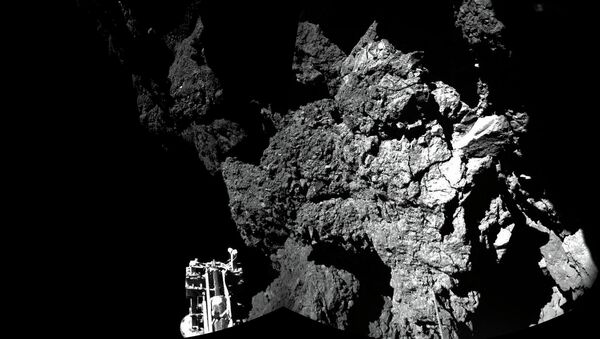MOSCOW, November 17 (Sputnik) — The first processing of the data by the European Space Agency’s (ESA) robotic lander ‘Philae’, sent to Earth before running out of power on the surface of Comet 67P, will be announced Monday.
Several research teams of the European Space Agency in Germany have been processing and analyzing the data received from the comet lander “Philae”. The primary results of their research were discussed on Monday morning during a special meeting, according to an AP report. The agency will release the researcher’s conclusions for wider public review later today.
The amount of data is limited, because the ‘Philae’ module landed in the shade of a rock on the comet’s surface, where it is not receiving enough solar energy to support its operating systems and continue data gathering. The lander only managed to conduct several tests and send their results to Earth before its internal batteries were exhausted.
Researchers at ESA have evaluated the data and are determing whether the tests conducted by ‘Philae’ were successful. The most important test was conducted Friday, when the module was programmed to take samples of the comet’s matter by drilling a 10-inch (25.4 cm) cavity into the surface.
The scientists assume that since the matter under the surface of the pristine comet’s core has remained mostly changeless for roughly 4.5 bn years, the analysis of its composition may shed some light into the cosmogonic history of our Solar system. Researchers also suppose that it may be comets that brought life – bacteria and water – to Earth, and the data from ‘Philae’ will help verify this theory.
The module landed on the comet Wednesday, at a distance of 311 mln miles (500 mln km) away from Earth. As it landed in the shade, it was not able to continue powering its systems, and went on a hibernation mode on Saturday. It may reawaken sometime in August 2015, when the comet will have moved into an orbit where the solar illumination will be able to reach ‘Philae’s’ solar panels.

